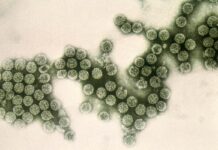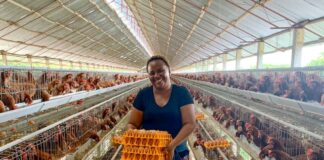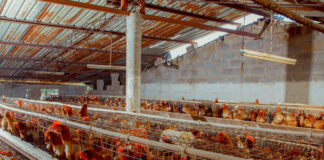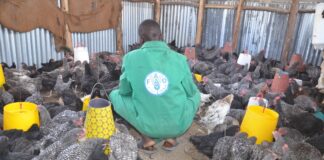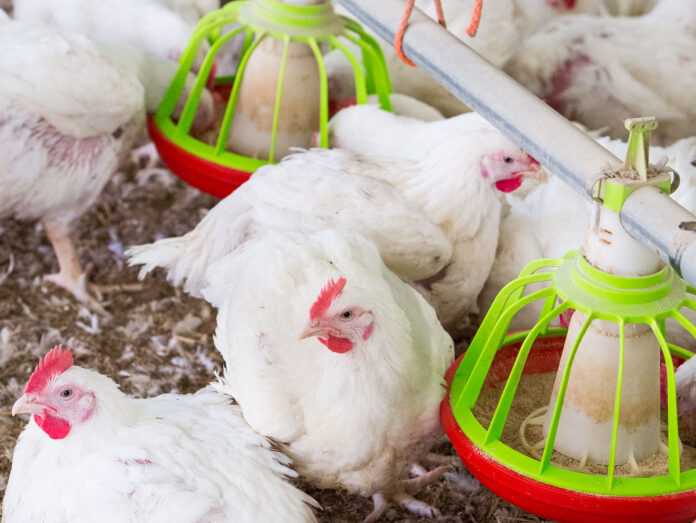
The production of “No Antibiotics Ever” (NAE) poultry is a common trend worldwide today. Despite scientific evidence indicating that specific antibiotic growth promoters (AGP) could still be used selectively and rationally in animal feeding programs, market tendencies and the constant negative publicity in the media against AGP have shifted most poultry integrators to at least some level of NAE production, due to perceived marketing opportunities.
Following the ban on AGP, gut health issues have become more common and increasingly challenging for producers and integrators, especially in broilers. This has proven to be most obvious in countries such as the United States, where, together with the AGP ban, the use of ionophore coccidiostats were also banned. There is no doubt that poultry gut health is critical to optimize digestibility, minimize nutrient excretion and consequently mitigate the environmental impacts of ammonia, odors and other gas emissions with the health and welfare aspects of birds and human workers. There is agreement that AGP somehow seem to dampen intestinal inflammation and reduce bile salt deconjugation, thus masking gut health issues. By investigating the mechanisms of gut health, it has become apparent that, from now on, progress made in poultry nutrition will only occur by considering the effects on gut health that may come from any change in feed formulation/processing.
Gut health and the intestinal microbiome
Poultry intestinal health is a particularly complex subject with multiple aspects associated with it. The avian gastrointestinal tract (GIT) plays a key role in animal production and has digestive, absorptive, metabolic, immunological and endocrinological functions. Even though modern broilers are known for extremely efficient feed conversion and rapid growth, such performance requires large amounts of feed intake, putting enormous pressure on the physiology of the GIT. In less than 20 years, and particularly since the beginning of the phase out of AGP in poultry feed, the science of the intestinal ecosystem of the chicken has developed into an entirely new field of research. The field continues to gain increasing interest as global food security becomes a greater concern and the poultry industry faces increasing demands for economic efficiency, sustainability, animal welfare, food safety and a reduction in environmental impacts.
Sustainable poultry meat and egg production is critical to provide safe, abundant and high- quality protein sources that can address human nutrition and food security needs on a global scale. The GIT of chickens harbors a diverse and complex microbiota that plays a vital role in digestion and absorption of nutrients, immune system development and pathogen exclusion. The integrity, functionality and health of the chicken gut depends on numerous factors, particularly the environment, feed supply and the GIT microbiota. However, several confounding factors influence the intestinal microbiota in chickens. It has been identified that host-related factors, such as age, sex and breed, have a large impact on intestinal microbiota. The diversity of the chicken intestinal microbiota tends to increase the most during the first two weeks of life, and the corresponding colonization patterns seem to differ between layer- and meat-type chickens. Furthermore, it has been found that environmental factors, such as biosecurity level, litter, feed access, husbandry, housing and climate, have an effect on the composition of the intestinal microbiota.
Intestinal health often focuses on control of intestinal disease, generally related to coccidia or specific bacteria like Clostridium perfringens, E. coli or Salmonella. This is understandable because these are often the main health issues that producers and integrators deal with on a day- to-day basis when intestinal health issues arise, particularly when NAE production programs are also involved. However, Oviedo-Rondón (2019) indicates that, in reality, these are the consequences, not the causes of the problem. Generally, the actual problem is an excess of nutrients, particularly indigested protein, in the lower intestine which causes a proliferation of these microbes in the lower intestine, causing inflammation. Therefore, a key aspect to improving intestinal health and, therefore, NAE production, is to ensure that appropriate digestion occurs before the lower gut in most cases.
A critical feature of the gut microbiome is that it affects the development and maturation of the host immune system. In addition, a more diverse gut microbiome has been associated with reduced stress levels and better welfare in chickens. Management practices early in the life of broiler chickens affects their behavior and welfare. Therefore, early access to feed after hatching is critical as there is a dramatic increase in microorganisms in the chicken’s intestine after the first ingestion of feed, which stimulates the development of the gut and the immune system. Any delay in access to feed affects the development of the gut and the immune system in broilers.
In recent years, numerous attempts have been made to modulate the intestinal microbiome through nutritional or management interventions with the aim to improve intestinal health in poultry. The microbiota residing in different sections of the GIT are strongly influenced by the flow of undigested feed components. As a result, the normal gut microbial community can offer advantages and disadvantages to the host. Advantages include competitive exclusion of pathogens, immune system stimulation and programming and contributions to host nutrition. In contrast, microbiota also incurs cost to the host because microbes compete with the host for energy and protein. In addition, microbes produce toxic metabolites and catabolize bile acids, which may depress growth and decrease fat digestibility of the birds, respectively. Even generally beneficial processes resulting from the presence of microbiota increase the demand for energy and protein from the host and therefore have an influence on the growth performance of the birds.
Importance of feed and water quality
It takes good quality feedstuffs to manufacture poultry diets that provide optimum digestibility. Unfortunately, not every bushel of corn and soybeans is a quality product. Poultry integrators, particularly those in NAE production programs should place increased emphasis on avoiding levels of mycotoxins in feedstuffs and rancid fats that exceed recommended limits, if they expect to avoid intestinal health issues. Contract producers should monitor their outside feed storage bins and inside feed hoppers for mold growth and should not feed moldy feed to birds. Mycotoxins can compromise several key functions of the GIT, resulting in decreased nutrient absorption by decreasing available surface area, modulation of nutrient transporters and loss of barrier function. Rancid fats and oils should not be used because they have been related to pathogenesis of enteric diseases.
Today’s NAE environment demands proper fat storage and handling conditions in tanks and transport lines be evaluated often to manage rancidity development in the feed mill. Quality assurance in soybean meal processing is always critical but even more important for NAE programs because of the negative effects on digestion from undercooking or overcooking soybeans. Undercooked soybeans have higher antitrypsin factor concentrations whereas overcooking results in decreased protein digestibility. High concentrations of trypsin inhibitors in broiler diets have been directly correlated with rapid feed passage and an imbalance in the gut microbial community. Soybean meal particle size is also important. Coarser particle size favors higher digestion of soybean protein and minimizes the negative effects of antitrypsin factors.
After the first ingestion of feed after hatch, a large increase in bacterial numbers in the chicken intestine is observed. Delaying access to feed in newly hatched chicks is detrimental to the development of the intestinal surface area and therefore potentially also the microbiota composition. Temporary feed withdrawal later in life has been associated with an increased intestinal pathogen colonization, including Salmonella. Therefore, producers should make every effort not to run out of feed during a flock. Monitor the feed supply on the farm and contact the service technician or feed mill before the feed supply is depleted. Some feed outages may be unavoidable (feed mills do occasionally break down), but producers should make every attempt to not run out of feed during the flock as this can have detrimental consequences on flock performance.
Like soybeans, corn plays a major role in the makeup of commercial poultry diets. Genetics, moisture content at harvest, drying temperatures and storage conditions can affect digestibility. The drying process is critical to quality of the corn because it affects the physical traits of the corn grain, particle size produced during grinding or rolling and, in turn, the feeding behavior of the birds. Mycotoxin contamination is always a concern with corn. Several mycotoxins can contaminate corn including aflatoxins produced by Aspergillus spp; fumonisins, deoxynivalenol (DON; also known as vomitoxin) and zearalenone produced by Fusarium spp; and ochratoxins produced by Penicillium verrucosum. The level of mycotoxin(s) contaminating grain is dependent on many factors, including: 1) the incidence and severity of ear rot in the field, 2) the amount of damage to corn kernels during combining, 3) the prevailing weather conditions and 4) the adoption of cultural practices that minimize yield- limiting factors.
Good water quality is also important for proper digestion, so its physiochemical characteristics should be measured, controlled and improved at the farm level. The push to NAE production has highlighted the importance of poultry drinking water and the high cost of neglecting the quality of this vital nutrient. Previous antibiotic use allowed producers and integrators to become lax in monitoring of on-farm water quality.
However, NAE programs do not forgive management mistakes, and many producers are now paying for complacency where their water quality is concerned. Water hardness, alkalinity and a basic water pH disturb the normal crop pH of the bird and consequently reduce the first phase of digestion. Drinking water pH should be maintained slightly acidic, between 5.5 and 7, because basic water reduces the activity of most digestive enzymes. In addition, high concentrations of salts and solids in the water and a basic pH tend to favor the production of biofilm and endotoxins in water lines and drinkers due to the proliferation of algae and microbes.
Biofilm and salts contribute to the degradation of microbiological parameters of water and can also contribute to clogging issues in nipples and consequently affect water availability for birds. A reduction in water intake, regardless of the reason, adversely affects gut physiology, digestion and live performance.
Water sanitation methods using chlorides, peroxides or other products can help minimize growth of bacteria and algae. Producers should do all they can to avoid water deprivation or feed withdrawal which can cause intestinal problems during grow out, particularly in NAE programs. After five or six hours of feed withdrawal, gut mucosa traits shift and mucin production is stimulated in the intestinal mucosa, and this extra mucin is used by bacteria that irritate the mucosa, generating the production of more mucus and increased inflammatory reactions.
Additional areas also play a major role on gut health. All environmental stressors deleteriously affect the immunological system of broilers. Heat stress and large temperature variations should be avoided at all times, regardless of flock age. The house environment (temperature, humidity, wind speed) is critical for healthy, productive flocks, and this environment changes as the flock ages. High stocking density is sometimes associated with wet litter and necrotic enteritis, but proper ventilation can often successfully manage a high stocking density. Good house ventilation is key for intestinal health to minimize condensation, litter moisture and caking. Lighting programs may also impact feed intake behaviors, gut motility and digestion. Proper feeding and nutrition of broiler breeders are fundamental for adequate development of their progeny. Hatchery management is also critical because suboptimal incubation tends to increase the hatch window leading to problems with development of the gut and general immunity. However, for intestinal health, especially with NAE production, preventing coccidiosis and necrotic enteritis are the main concerns.
Summary
Gut health is critical to broiler productivity, food safety, animal welfare and the impact of poultry production on the environment. The NAE production programs in place today complicate the broiler production landscape because NAE birds must be managed differently. Use of NAE programs requires greater emphasis on feed manufacturing and formulation, drinking water quality, feed additives, antibiotic alternatives, housing and management. The concern reaches much farther than the broiler house. Biosecurity and a renewed emphasis on management must ratchet up across the industry at the pullet farm, breeder farm, hatchery, feed mill and broiler farm. It will take every sector working together as a single unit to successfully manage NAE production and maintain poultry intestinal health.
References are available on request
By courtesy of the University of Tennessee Institute of Agriculture and UT Extension


